
推进与动力(英文)(Propulsion and Power Research)(OA期刊) 知网目次维普目次
- 高T2
- 主管单位:
工业和信息化部
- 主办单位:
北京航空航天大学
- 国际刊号:
2212-540X
- 国内刊号:
10-1919/V
- 学科分类:
- 字数:
-
- 有无基金:
- 周期:
CN外文-季刊
- 特殊属性:
外文期刊
- 电话:
010-61716755;15810128868(官网电话)
- 邮箱:
ppr@buaa.edu.cn(官网邮箱)
- 复合因子:
0
- 综合因子:
0
- 收录:
知网目次,维普目次
- 级别:
高T2
期刊简介
《推进与动力》期刊已被查看: 次
更新频次
单位占比
一作占比
投稿指南
1、投稿方式:在线投稿。
2、官网网址:(微信公众号信息)
http://ppr.buaa.edu.cn
https://www.sciencedirect.com/journal/propulsion-and-power-research
3、投稿系统:https://mc03.manuscriptcentral.com/jppr
4、出刊日期:季刊,逢季末月出版。
2024年2月26日星期一
《推进与动力(英文)》期刊简介
【微信公众号信息】
关于我们
《Propulsion and Power Research》是由北京航空航天大学主办的英文科技学术期刊,创刊于2012年,由北航副校长陶智教授担任首任主编至今。期刊主要刊登航空航天推进及动力工程基础研究领域具有学术价值或者应用价值的科技论文,鼓励及优先发表著名专家学者撰写的综述文章,或在基础理论上有重大突破或创新的研究论文。
联系我们
Website:
http://ppr.buaa.edu.cn
E-mail:
ppr@buaa.edu.cn
Telephone:
(86 10) 61716755
《推进与动力(英文)》(Propulsion and Power Research)
作者指南【官网信息】
Guide for Authors
1.Submission declaration
Submission of an article implies that the work described has not been published previously (except in the form of an abstract or as part of a published lecture or academic thesis), that it is not under consideration for publication elsewhere, that its publication is approved by all authors and tacitly or explicitly by the responsible authorities where the work was carried out, and that, if accepted, it will not be published elsewhere in the same form, in English or in any other language, without the written consent of the copyright-holder.
By submitting a manuscript, the authors agree that the copyright for their article is transferred to Propulsion and Power Research if and when the article is accepted for publication. Responsibility for the contents of a manuscript rests upon the authors and not on this journal, the editors or the publisher. The technical contents of the manuscript should be carefully considered by the authors before submission for publication.
2.Language
Propulsion and Power Research is published in English.Manuscripts should be written in English. Manuscripts in which the English is difficult to understand can be rejected. Grammar and Syntax checklist will help expedite the submission process.
Authors who are unsure of correct English usage should have their manuscript checked by someone proficient in the language. If English is not your native language, we recommend that you use a language editing service to improve the English language quality in your paper.
3.Online submission
Be sure to check the Guide for Authors, please submit your article via ScholarOne Manuscript for Propulsion and Power Research, http://ppr.buaa.edu.cn. The maximum size of uploaded files is no more than 60 MB.
Submit your manuscriptand other attachments; the files may be Microsoft Word, Adobe Acrobat PDF, or any otherversion. Use the PPR Writing Template as a template if you are using Microsoft Word 2003 or later for Windows. Otherwise, use the Writing Template as an instruction set. Submission system automatically converts source files to a PDF versionand a HTML version of the article, whichareused in the peer-review process.
All correspondence, including notification of theeditor's decision and requests for revision,may be made through the e-mail: ppr@buaa.edu.cn.
4. Peer review
This journal operates a single blind review process. All contributions will be initially assessed by the editor for suitability for the journal. Papers deemed suitable are then sent to a minimum of two independent expert reviewers to assess the scientific quality of the paper. The Editor is responsible for the final decision regarding acceptance or rejection of articles. The Editor's decision is final.
5.Article format requirement
Authors should make every effort to conform to the article structure given below for the preparation of manuscripts. Proper preparation of manuscripts will speed publication of articles. Improperly prepared manuscripts may be returned to the authors for correction before being accepted for publication.
•Title
Article titles will be used in information-retrieval systems. The title should briefly summarize the purpose of your research and optimally characterize the contents of your paper. Avoid abbreviations and variable symbols where possible.
•Author names and affiliations
Where the family name may be ambiguous (e.g., a double name), please indicate this clearly. Present the authors' affiliation addresses (where the actual work was done) below the names. Indicate the affiliation with a lower-case superscript letter immediately after the author's name and in front of the appropriate address. Provide the full postal address of each affiliation, including the country name, and, if available, the e-mail address of each author.
•Corresponding author
Clearly indicate who will handle correspondence at all stages of refereeing and publication. Mark the corresponding author with “*” on the top right and provide the contact information in the footer of the first page.
•Abstract
An abstract of 300 words or less should precede the introduction. The abstract should be a short summary that explains the main argument(s), topic(s) or findings of a manuscript.
•Keywords
Provide 5 to 8 keywordsbelowthe abstract. These terms should optimally characterize the paper. These keywords will be used for indexing purposes. Use keywords that make your paper easy detectable for interested readers in literature databases. Avoid abbreviations and variable symbols where possible.
•Nomenclature and abbreviations
Paper with many symbols should have a nomenclature which conforms to the system of standard international (SI) units. Nomenclature must be listed between the abstract and the introduction. If one is used, it must contain all the symbols used in the paper.
Acronyms and abbreviations should be spelled out in full at their first occurrence in the text, for example, “Reynolds-averaged Navier-Stokes (RANS)”. In general, minimize the use of abbreviations so the paper remains easily understood by the general reader.
•Subdivision - numbered sections
Divide your article into clearly defined and numbered sections. Subsections should be numbered as follows.
1. First-level heading
1.1. Second-level heading
1.1.1. Third-level heading
NOTE: The nomenclature, the abstract, the keywords, the acknowledgements and the references should not be included in section numbering.
•Introduction
State the objectives of the work and provide an adequate background, avoiding a detailed literature survey or a summary of the results.
•Methods, results and others
Provide sufficient detail to allow the work to be reproduced. Methods already published should be indicated by a reference: only relevant modifications should be described. Results should be clear and concise. Show only those experimental results that are relevant to your objectives and conclusions and which you want to discuss.
•Equations
(1) Use the formula editor to create the equation.
(2) Equations are numbered consecutively, with equation numbers in parentheses.
(3) Variables are presented in an italic font style. Vectors and matrices should be used in bold italics.
(4) Ensure that symbols are defined in the nomenclature or immediately follow the equation.
(5) When citing an equation in the text, use the abbreviation “Eq.” except at the beginning of a sentence, for example, “… as shown in Eq.(1)”, “... Eqs. (2) and (3)”, “Equation (1) illustrates that …”.
•Figures
(1) Figures can be in color or grayscale, or be black-and-white. Figures should have no background, borders, or outlines.
(2) Insert figures within your text.Number figures according to their sequence in the text. Use “Figure” instead of “Fig.” both in the text and in figure captions, for example, “Figure 1”, “Figure 2”. Ensure that each figure mentioned in the text actually exists.
(3) Ensure that each figure has a caption, and place the caption below its figure. If a figure has multiple parts, insert sub-caption, such as “(a)”, “(b)”, below each part and above the figure caption. Provide detailed information and minimize use of abbreviations in figure captions,andmake sure your figures can be understood without reading the text.
(4) The default font of figures is Times New Roman, 8-point size. Narrow the appropriate font only if there is no enough space to type the figure notes. Make sure all characters in figures are legible after reduction to typeset size.
(5) Full page width andcolumnwidthfigures should be less than80mm and 160 mmin widthrespectively, which are the maximum admitted widths for the page setup.
(6) Make sure figure images meet the demand of the print sharpness and quality. Various types of figures are as follows.
EPS format: Vector drawings. Embed the font or save the text as "graphics".
TIFF format: Color or grayscale photographs (halftones): always use a minimum of 300 dpi.
TIFF format: Bitmapped line drawings: use a minimum of 1000 dpi.
TIFF format: Combinations bitmapped line/half-tone (color or grayscale): a minimum of 500 dpi.
•Tables
(1) Insert tables within your text, and number tables consecutively in accordance with their appearance. Do not abbreviate “Table” both in the text and in table captions, for example, “Table 1”, “Table 2”. Ensure that each table mentioned in the text actually exists. Ensure that each table has a caption, and place the caption above its table.
(2) The default font of tables is Times New Roman, 8-point size. Do not reduce font size even though there is not enough space.
(3) Place footnotes to tables below the table body and the font is Times New Roman, 8-point size.
(4) Minimize the use of symbols and abbreviations in the tables.
(5) Full page width and column widthtables should be less than80mm and 160 mmin widthrespectively, which are the maximum admitted widths for the page setup.
•Conclusions
Conclusions not only should review the main points of the scientific paper, but also should elaborate on the importance of the work or suggest applications and extensions.Conclusionsshouldnot contain references to the cited literature.
•Acknowledgements
Placeacknowledgements in a separate section at the end of thetextbefore the references. List here those individuals who provided help or financial support during the research.
•References
(1) Text: Indicate references by number(s) in square brackets in line with the text. The actual authors can be referred to, but the reference number(s) must always be given. For example: “… as demonstrated [3,4]. Barnaby and Jones [5] obtained a different result …”
(2) List: Number the references (numbers in square brackets) in the list in the order in which they appear in the text.
(3) All authors’ names should be given in the reference list, instead of using “et al”.
(4) In the reference list, papers that have not been published should be cited as “unpublished”; papers that have been submitted or accepted for publication should be cited as “submitted for publication.”
(5) Private communications and personal websites may be mentioned in the text, but should not be recommended in the reference list.
The following examples illustrate the recording form of different reference types. Cite references in your paper as follows. You are not required to indicate the type of reference. Different types are marked below with red letters for illustrative purposes only.
[1] D. Bohn, SFB 561: aiming for 65% CC efficiency with an air-cooled gas turbine, Modern Power Systems 26 (9) (2006) 25-29.(Periodical)
[2] G. Laschet, S. Rex, D. Bohn, R. Krewinkel, 3-D analysis of curved transpiration cooled plates and homogenization of their aerothermal properties, ASME Journal of Turbomachinery129(4) (2007) 791-799. (Revised version of GT2006-90377)(Periodical)
[3] F.L. Matthews, R.D. Rawlings, Composite Materials Engineering and Science, Second ed., Chapman & Hall, New York, 1994, pp. 12-16.(Book)
[4] R. Volpe, Techniques for collision prevention, impact stability, and force control by space manipulators, in: S.B. Skaar, C.F. Ruoff (Eds.), Teleoperation and Robotics in Space, Progress in Astronautics and Aeronautics, AIAA, Washington, DC, 1994, pp. 175-212.(Book)
[5] D. Bohn, R. Krewinkel, Effects of concave and convex curvature on the cooling effectiveness of effusion cooled multi-layer plates, in: K.D. Papailiou, F. Martelli, M. Manna (Eds.), Proceedings of the 7th European Turbomachinery Conference, Athens, Greece, 5-9 March 2007, pp. 967-977.(Proceedings)
[6] D. Bohn, R. Krewinkel, S. Tian, Cooling performance of grid-sheets for highly-loaded ultra-supercritical steam turbines, in: Proceedings of the 2nd International Symposium Jet Propulsion and Power Engineering, Guilin, P.R. China, September 22-26, 2008, Paper No. 2008-ISJPPE-2002.(Proceedings)
[7] Th. Fend, O. Reutter, J. Sauerhering, K.S. do Couto Aktay, R. Pitz-Paal, S. Angel, Effective thermal conductivity of metallic foams determined with the transient plane source technique, ECTP, Bratislava, September 4-8, 2005.(Report)
[8] J.M. Owen, Prediction of ingestion through turbine rim seals, part 2: externally-induced and combined ingress, ASME Paper GT2009-59122, 2009.(Report)
[9] K. Tseng, Nonlinear Green’s function method for transonic potential flow, Ph.D. Dissertation, Aeronautics and Astronautics Dept., Boston Univ., Cambridge, MA, 1983.(Thesis)
[10] J.C. Richard, G.C. Fralick, Use of drag probe in supersonic flow, in: AIAA Meeting Papers on Disc, AIAA, Reston, VA, Vol. 1, No. 2, 1996.(CD-ROM)
[11] Ramgen Power Systems, Low-cost, high-efficiency CO2compressor, URL: http://www.carboncouncil.org/pdf/presentations/technologies_baldwin.pdf [cited 05 December 2007].(Online database)
[12] C.P. Atkins, J.D. Scantelbury, The activity coefficient of sodium chloride in a simulated pore solution environment, Journal of Corrosion Science and Engineering, Vol. 1, No. 1, Paper 2, URL: http://www.cp/umist.ac.uk/JCSE/vol1/vol1.html [cited 13 April 1998].(Online journal)
[13] B.O. Muthén, Mplus, Version 5.1, Los Angeles, CA, 1998.(Computer software)
[14] R. Scherrer, D. Overholster, K. Watson, Lockheed Corp., Burbank, CA, U.S. Patent Application for a “Vehicle,” Docket No. P-01-1532, filed 11 Feb. 1979.(Patent)
Download the documents here:
· ppr guide for authors.pdf
· ppr guide for authors.doc
上一篇:交叉学科医学(英文)(Interdisciplinary Medicine)(国际刊号)下一篇:中国文化传播(集刊)
《推进与动力》同类航天工程期刊
-
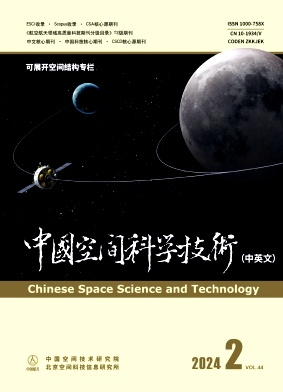
中国空间科学技术(中英文)(不收版面费审稿费)
北核,CSCD,科核,武A,高T2
CN中文-双月刊影响因子1.42
-

空间科学学报
北核,CSCD,科核,高T1,高T2,高T3
CN中文-双月刊影响因子0.526
-
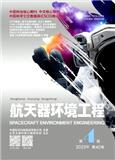
航天器环境工程(不收版面费审稿费)
CSCD,科核,武B+
CN中文-双月刊影响因子0.882
-
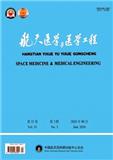
航天医学与医学工程
科核,武A-
CN中文-双月刊影响因子0
-
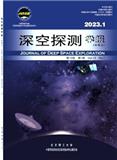
深空探测学报(中英文)
北核,CSCD,科核,武B+
CN中文-双月刊影响因子1.201
-
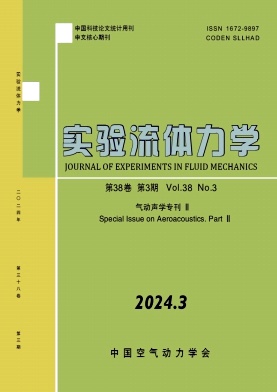
实验流体力学(原:气动实验与测量控制 流体力学实验与测量)
北核,CSCD,科核,高T3,武B+
CN中文-双月刊影响因子0.886
-
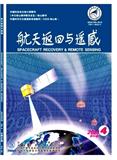
航天返回与遥感(不收版面费审稿费)
北核,CSCD,科核,武A-
CN中文-双月刊影响因子1.304
-
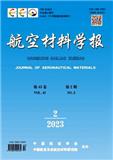
航空材料学报
北核,CSCD,科核,武A+,高T2
CN中文-双月刊影响因子2.529
常见问题
-
推进与动力杂志社官网、联系方式是什么?
推进与动力杂志社官网:http://ppr.buaa.edu.cn
投稿网址:https://mc03.manuscriptcentral.com/jppr联系电话:010-61716755;15810128868(官网电话)
投稿邮箱:ppr@buaa.edu.cn(官网邮箱) -
推进与动力杂志是核心期刊么?
推进与动力不是核心期刊,级别是:高T2, 是:航天工程分类下的知网目次,维普目次收录的期刊。
-
请问你们是推进与动力杂志社吗?
我们不是《推进与动力》杂志社。本站主要从事期刊信息展示与期刊推荐,不是任何杂志官网,直投稿件请联系杂志社。本站仅提供免费的学术指导、论文辅导、期刊投稿信息整理收集服务。
-
你们指导服务后可以保证文章被发表吗?
期刊发表的成功与否,主要取决于文章内容的质量。编辑老师会根据研究领域、创新性等多因素进行考量。我们会帮助您理解期刊的发表要求,助力提升发表几率,从而增加发表的机会。
-
晋级论文能否在报纸上发表?
在学术界,论文的发表往往被视为研究者职业发展的重要一环。晋级论文,即为了获得更高职称或学术地位而撰写的学术论文,通常需在专业期刊上发表。然而,许多人可能会问
